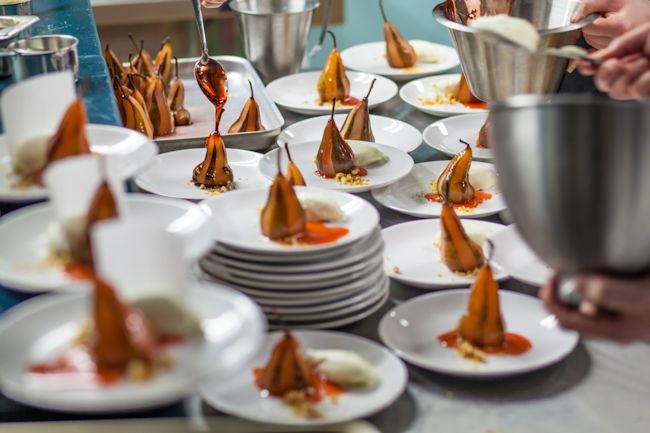
By Larry Mogelonsky, MBA, P. Eng. (www.lma.ca)
Food is by far one of the best ways to differentiate your property and make a lasting impression with guests. Why? For one, eating involves a range of senses – taste, smell, sight, touch and, if you count the hustle-bustle of a lively ambiance, sound. It’s this activation of so many senses that primes our emotions and signals our memory centers to start taking notes. Plus there’s the emotional transference effect – good times at a restaurant reflect kindly on the parent property.
Next, there are so many ways to stand out and deliver a unique experience in a much cheaper capacity than, say, renovating the lobby or refurnishing the guestrooms. You can accomplish this through unique cuisine or beverage choices, exceptional presentation, chic décor, or the creation of a highly social atmosphere. It’s this last point that can also help you generate cross-traffic with the actual hotel; making your lobby bar or restaurant the town’s hotspot will in turn bestow your guestrooms with an aura of popularity and allow you to command a slightly elevated ADR.
For these reasons, upgrading your F&B experience should be a top priority. And to clarify, you should aim to develop the overall narrative told by your dining experience. What I mean by this is that it isn’t just the food, but everything leading up and surrounding the meal, so much so that the sum is greater than all the parts.
If you think about what makes a story great, then that should be your starting point for figuring out the best way to your boost F&B program. Good stories have specificity, variety and theme. Here are some tips to help elucidate what you can do:
1. Pictures. Taking photos of one’s meal isn’t solely reserved for foodies. There’s a little gourmand in each and every one of us. Pictures help jog the memory long after the fact and they are start for sharing with friends, whether in person or online. In order to get your food noticed online and start a conversation (a task far easier with visual stimulation than just text) you need to have creative presentation both in layout and ingredients used (my advice: lots of color). But think beyond food; is your restaurant décor photo-friendly? Is the lighting conducive for taking snapshots of those assembled? Do you have any fun knickknacks on the table? Anything else worthy of a photograph?
2. Ingredient Selection. Each component of a meal tells a certain portion of the overall story, and it’s important that you express the detail surrounding each part. For instance, if you are serving steak on the menu, where exactly did that beef come from and why did you select that particular cut to put on the menu? Have you partnered with any local, regional or certified organic farms worth mentioning? Along these lines, you might also consider substituting ordinary ingredients with similar but far more esoteric fare – obscure mushroom varieties or replacing lettuce with kohlrabi, for instance. How about cheeses? There are so many eclectic varieties outside of cheddar and mozzarella to get the mind thinking, even if it’s only for a split second. If you serve pasta, what stands out more: having a server walk around offering freshly shaved parmesan or another lesser known firm cheese like pecorino or manchego?
3. Menu As Storybook. Many restaurants treat menus as a means to an end – that is, displaying what’s offered in clear lettering and that’s all. But what if the menu was something more? What if the meal options were exhibited in more of an infographic arrangement? In this sense, you could have the actual menu items as bolded slug lines with a short paragraph below outlining why the chef chose this particular dish as well as any unique aspects of the preparation, with thematically appropriate images placed artfully throughout, of course.
4. Staff As Storytellers. I can’t stress enough how important it is to have knowledgeable and expressive servers and managers. After all, what is a story if there’s no one articulate enough to convey the proper timbre and gravitas to an audience? You definitely need to hire charismatic individuals, but part of this can come from ‘menu confidence’ via proper training. The question to end all questions in this regard occurs when a patron asks, “What you do recommend?” This can be a tremendous launch pad for your frontline staffers to demonstrate the true value of your restaurant’s dining experience and fill in the blanks wherever they may be.
These four broad suggestions barely touch the surface as to what you can do. The key is that you create talking points and unique differentiators so that your dining experience is not exactly like any other place around. My final suggestion is that you get out there and learn from the world. Visit restaurants of all cuisine types and price ranges, and observe what makes each exceptional – or not exceptional, which is in itself a valuable exercise. Learn from everywhere and I guarantee good things will come.
________
This article may not be reproduced without the expressed permission of the author.


